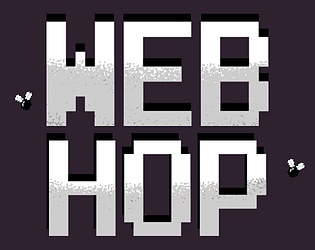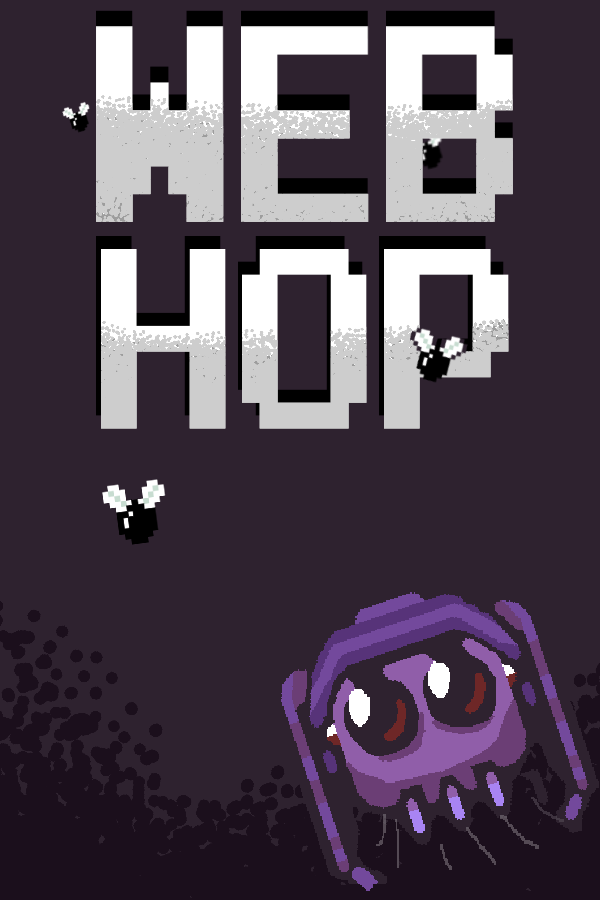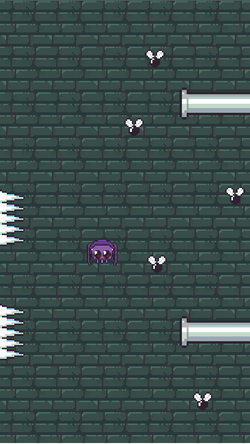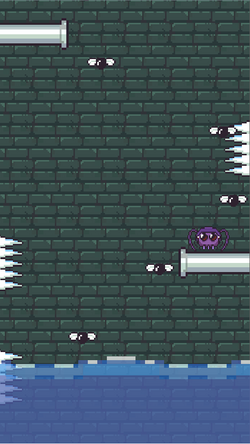About Project
WebHop is a platform game summited as part of “MiniJam 123: Web” Game Jam. It was made under 3-days by a 3-man team.
Team Size: 3
Tools Used: Unity Engine
Languages: C#
Project Duration: 3 Days
Genre: Platformer
Platforms: WebGLv
Development:
The development of WebHop was relatively straightforward. We drew inspiration from games like Doodle Jump, where the player jumps on platforms indefinitely.
In WebHop, the world is infinite, but the player is rushed due to the flooding sewage.
Technical Skills:
WebHop was a project I created for a Game Jam with a focus on producing a challenging and engaging game within a tight deadline.
The most challenging, yet enjoyable, aspect of developing WebHop was the procedural level generation. One particular challenge was
ensuring that the player's movement felt natural while still keeping them within certain boundaries. This was necessary due to the
limitations of Unity's world dimensions. Although Unity's scene dimensions are huge (almost impossible for a player to reach the limit
while playing the game), I wanted to ensure that it wouldn't be an issue if someone did actually reach that limit.
To solve this problem, I divided the level into segments. Each segment was responsible for spawning its specific contents, such as flies, spikes,
or solid obstacles. There were only four segments in total. When the player was between segments 3 and 4, we would swap the segments and their contents,
including the player, with segments 1 and 2. The last two segments would then reset themselves, returning their contents to the ObjectPooler and regenerating as
completely new segments. Regarding the water, we calculated the distance of the water to the player when the segment swap occurred, and then moved the water to
the bottom with an offset to prevent it from glitching on top of the player. This is known as Reset Floating Origin.
When a segment was reset, all objects within it were returned to the ObjectPooler class, and the segment regenerated itself.
First, it would spawn all flies, then pipes, and finally spikes. For pipes and spikes, a random value was used to determine whether they would spawn at
certain positions. Flies, on the other hand, always spawned the same number to ensure that gameplay remained possible. As for the game's background, it
was set as a child of the camera and utilized world space coordinates to create the illusion of scrolling.
Overall, the development of WebHop involved addressing challenges such as procedural level generation and player boundary management.
These technical skills were essential in creating an engaging and enjoyable game within the constraints of a Game Jam.
Feedback:
Since the game was an entry for a Game Jam, we received plenty of valuable feedback! We received a total of 18 ratings. One common piece of feedback was that the game
was a bit too difficult, and some players found the controls, especially the shooting mechanics, to be challenging. They recommended using the Spacebar for shooting.
Unfortunately, the team has disbanded, and we are no longer working on or supporting this game. Nevertheless, we are incredibly proud and grateful for all the fantastic
feedback we received.
Takeaway
Although the team is no longer actively working on this project, it remains one of my proudest early accomplishments. I consider it the most polished
game I have developed so far for a Game Jam. It holds a special place in my heart. I learned a great deal, particularly about procedural generation.
It was a lot of fun, and I hope that in the future, we may find a way to reunite the team and continue working on it.




